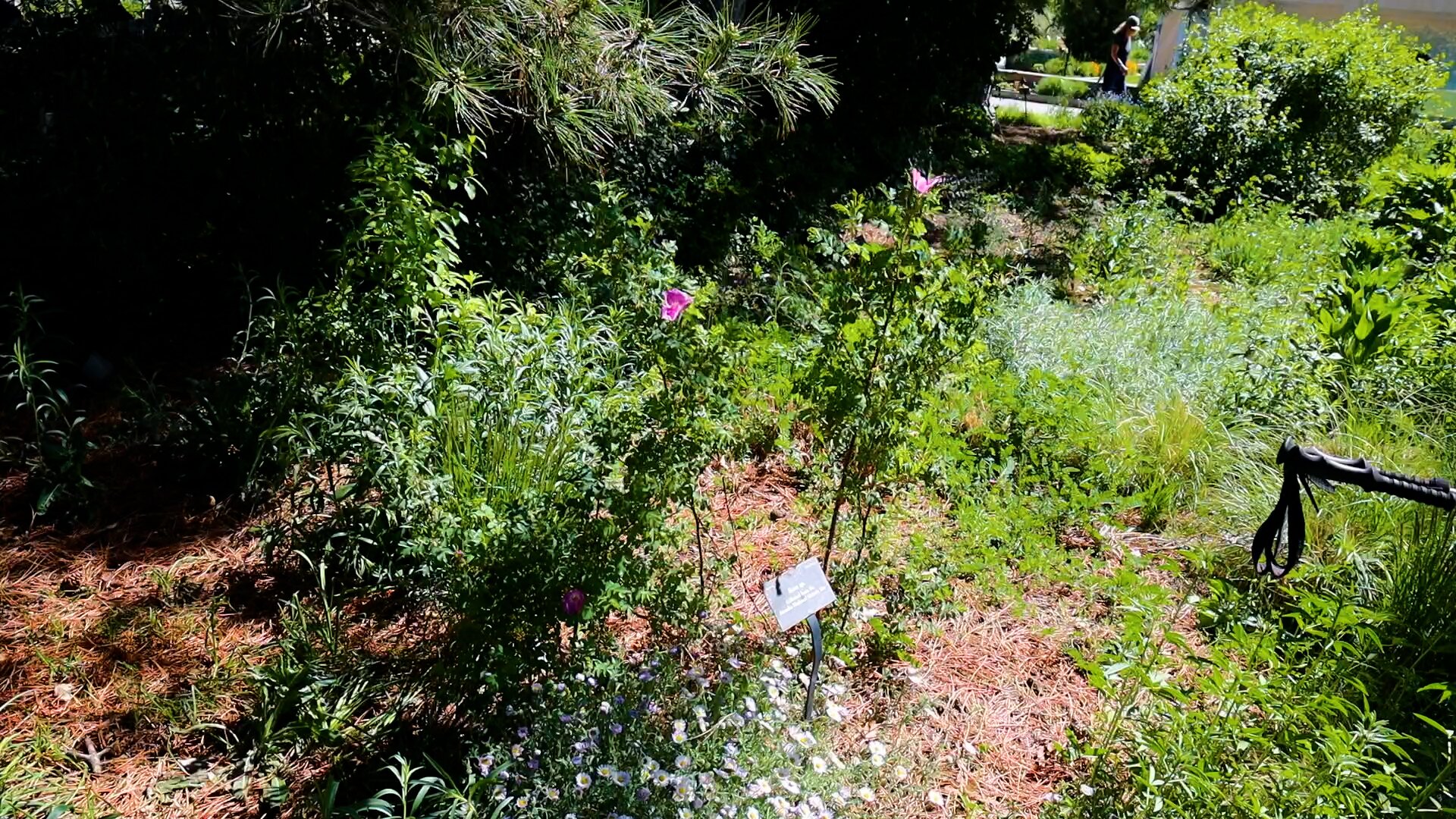Amache Rose blooms for the first time at the Denver Botanical Gardens

DENVER — The resilient Amache Rose's propagated plant cuttings bloomed for the first time at the Denver Botanic Gardens Thursday.
The blooming time was serendipitous, said Erin Bird, the associate director of communications at Denver Botanic Gardens, because it coincided with the official designation of the Amache Internment Camp in Granada, Colorado as a National Historic Site.
“It's a very emotional and bittersweet moment. Knowing this plant survived and thrived but a sad reminder of a very dark part of Colorado and U.S. history,” said Bird.
The Botanic Gaden’s rose bloomed just a week after the internment camp, where Japanese Americans were forcibly relocated during WWII, was designated as a historic site May 17.
The Amache Rose varietal was developed by a prisoner at the internment camp 80 years ago as a way to bring beauty and a sense of normalcy to the harsh environment.
The bloom is so that preservationists weren’t sure what color to expect from the flower–the rose bloomed a soft pink-magenta color. For some visitors, the flower’s survival in the desert lends it a spiritual meaning, Bird said.
Between 1942 and 1945, the U.S. Military opened 10 prison camps in California, Arizona, Wyoming, Colorado, Utah and Arkansas. More than 100,000 Japanese-Americans were imprisoned there during the war, according to the National Archives.
[Related: For grandson of Camp Amache incarceree, historic designation 'creates permanence']
The Denver Botanic Gardens propagated cuttings from 80-year-old Amache Rose samples obtained from the camp grounds for display and also distributed them to Tagawa Gardens, a local nursery owned by Amache camp survivors.
Descendants of internment camp survivors who live in Colorado, such as Noreen Gima, a Japanese-American whose mother was imprisoned in California’s Tule Lake Concentration Camp, also have cuttings.
Gima’s mother was born in 1930 and lived with her family in Sacramento, California, before being incarcerated at the camp.

Remembering this history is important, Gima said, because once the elders pass away, she fears no one will remember the history.
“One of the tragedies of this experience is they were U.S. citizens. But because Japan attacked Pearl Harbor they became instant enemies,” Gima said. “They didn’t have any rights once that determination was mandated. They lost everything, their farms, pets, businesses, everything.”
Gima has plans to visit the Amache Internment site where, every year, people gather for the Amache Pilgrimage.
“Imagine someone coming to your door and telling you to only take what you can fit in a suitcase and say goodbye to this life you know. How many people can get through that?” she said.
Gima created the graphics for the 2021 "Amache Rose" documentary produced by Denver Botanic Film, which will screen at the Freyer Newmans Center’s auditorium at the Botanic Gardens from May 19 through June 1. The documentary is available for streaming on Rocky Mountain PBS.

The original Amache Rose bush was discovered in 2020 by the University of Denver’s Amache Field School and the Amache Preservation Society, which conducted research visits to the Amache Internment Camp. The school contacted Denver Botanic Gardens, who then enlisted horticulturist Mike Boneto to begin propagating the Amache Rose.
In September 2021, Bone and two colleagues traveled to the site in Granada and collected about 50 cuttings of the Amache Rose to bring back for propagation. Twenty-five of the cuttings survived and were grown at one of the garden’s greenhouses. From those samples, more of the rose was propagated.
It’s a complicated group of emotions, Bone said, when it comes to reflecting on the blooming of the Amache Rose.
“This is about human and plant connection,” Bone said. “Knowing what the Amache Internment Camp was stirs up the emotions of [the] terrible ways how humans treated each other. We see these repeating patterns all over the world of humans intolerant of other humans for all kinds of made-up reasons.”

The rose’s survival and continued blooming after the camp's closure represent the enduring spirit of those who lived through the injustices of internment.
“It's disturbing that these sites, we as people have engaged in those kinds of actions, but also knowing there is this preservation society that is keeping what had happened there alive and rallying around [the camp] as a point of strength and honor,” said Bone.
Guests can view the bloomed Amache Rose at the Denver Botanic Gardens Steppe Collection.
Lindsey Ford is a multimedia journalist at Rocky Mountain PBS. Lindseyford@rmpbs.org